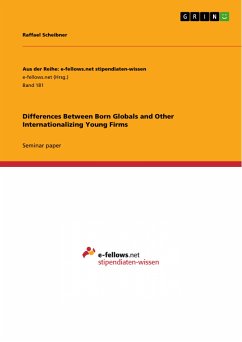Seminar paper from the year 2014 in the subject Business economics - Business Management, Corporate Governance, grade: 1,3, FOM Duisburg (FOM Duisburg), course: Semester 6, language: English, abstract: In spite of a progressing globalization, characterized by improvements in communication technologies, the world faces four billion people who live in poverty, mostly due to underemployment. By building up business activities in these markets, especially multinational corporations, are not only able to supply the local consumers with goods, but also create income potentials, while, at the same time, doing good in an economic sense. But these markets are often coined with problems, like a lack of basic infrastruc-ture, which makes entering these markets a long lasting, expensive and risky process for firms. Goal of this paper is to illustrate the stages model of internationalization according to Johanson and Vahlne in detail and evaluate its validation limits, 30 years after its first release, by summing up contemporary and recent reviews. After a short introduction, the basic principles will be identified, before pointing out the two fundamental parts of the stages model. While pointing out these parts, each section of it will be explained. Following the theoretical background, the limitations of the stages model, according to critics, will be presented. To conclude this work, an approach to evaluate the today´s relevance of the model and an overall conclusion will follow.









